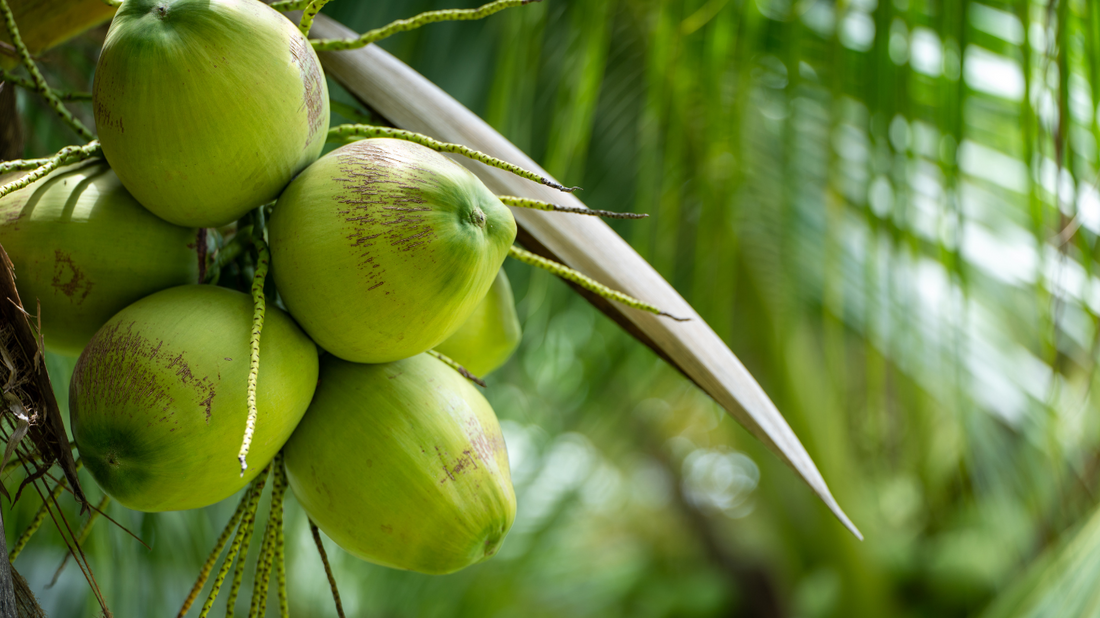
The Protocol To Cryopreserve Coconut Zygotic Embryos
As a content and community manager, I leverage my expertise in plant biotechnology, passion for tissue culture, and writing skills to create compelling articles, simplifying intricate scientific concepts, and address your inquiries. As a dedicated science communicator, I strive to spark curiosity and foster a love for science in my audience.


Coconut Propagation and Challenges
The coconut (Cocos nucifera L.) holds significant importance as a versatile perennial crop in tropical regions. Cultivated in over 80 countries, it plays a vital role in sustaining life in delicate coastal and island ecosystems. Major coconut-producing nations include Indonesia, the Philippines, India, and Sri Lanka. Belonging to the monotypic genus Cocos within the subtribe Butiinae and the tribe Cocoeae in the subfamily Arecoideae, the coconut is a crucial botanical species.
Coconuts serve as vital oil crops cultivated in tropical humid regions. However, these perennial palms encounter several challenges in achieving sustainable production, such as:
- Low productivity in commercially cultivated varieties
- Threats posed by intracellular pathogens and insect pests
- The impact of droughts on specific coconut-growing areas, exacerbated by climate change.
The diversity of coconut species is also at risk due to genetic erosion, leading to a decline in coconut cultivation areas caused by urbanization, housing development, farmers shifting to more profitable crops, fragmentation of coconut lands, and natural as well as human-made disasters.
Today, many propagation approaches are available for the propagation and preservation of Coconut species. Among those tissue culture techniques pose as an advanced and effective method to grow the trees at scale.
In this article, we present a procedure that combines the tissue culture and cryopreservation technique to grow and preserve Coconut species.

How Does Tissue Culture Can Help?
Plant cell and tissue culture involves cultivating plant cells, tissues, and organs in nutrient-rich media under carefully controlled sterile conditions. Originating from its establishment by Haberlandt in the early 20th century, this technique has transformed into a vital tool for plant research, serving both fundamental and practical purposes.
The technology of plant tissue culture is extensively employed for large-scale plant propagation. In addition to its research applications, plant tissue culture techniques have gained significant industrial significance in recent years. Producing plants commercially using micropropagation techniques offers numerous advantages compared to traditional methods such as seed propagation, cutting, grafting, and air-layering.
The technique is now useful for applications like:
- The production of disease-free plants
- Rapid multiplication of rare plant genotypes
- Plant genome transformation
- Production of plant-derived metabolites of important commercial value

What Is Cryopreservation Technique?
Cryopreservation is the process of preserving biological materials, such as cells, tissues, or whole organisms, at very low temperatures, typically below -130°C (-202°F), to maintain their viability and functionality over extended periods of time.
In cryopreservation, the biological samples are cooled slowly to minimize the formation of ice crystals, which can damage cellular structures. The samples are then stored in ultra-low temperature freezers, often using cryoprotectants to prevent ice formation and cellular damage during freezing and thawing processes.
At present, cryopreservation stands as the most advanced and cost-effective biotechnological method, ensuring the secure, long-term preservation of plant biodiversity without the possibility of genetic alterations.
The hardiness of coconut seeds makes long-term storage challenging with traditional methods. Thus, cryopreservation has emerged as a favored choice over field genebanks for conserving coconut germplasm due to its effectiveness.

Procedure To Cryopreserve Coconut Zygotic Embryos and PPM™ Use
The procedure is taken from the study of “Cueto, C., Rivera, R. L., Kim, H. H., Kong, H. J., Baek, H. J., Sebastian, L., & Park, H. J. (2014). Development Of Cryopreservation Protocols For Cryobanks Of Coconut Zygotic Embryos. Acta Horticulturae, (1039), 297–302. doi:10.17660/actahortic.2014.1039”
Preculturing
- Zygotic embryos were harvested from 10-11-month-old nuts of coconut ‘Malayan Yellow Dwarf’ (MYD), a dwarf cultivar.
- Endosperm plugs were disinfected with 100% commercial bleach for 20 minutes.
- Plugs were rinsed with sterile water four times to remove excess bleach.
- Embryos were excised and disinfected with 1% sodium hypochlorite for 10 minutes and rinsed three times with sterile distilled water.
- Embryos were inoculated into transfer media (half-strength Y3 basal medium + 45 g/L sucrose + activated charcoal 1 g/L + plant preservative mixture (PPM)™, gelrite 2.2 g/L) and kept in a culture room at 24°C under a 16-hour photoperiod before the experiments.
Whole Embryo Desiccation
- Precultured embryos in sucrose solutions (S-17.5% → S-40% → S-60%) for progressive desiccation. Embryos were precultured in sucrose solutions (Y3 basal liquid medium + 17.5% sucrose + PPM 1 ml/L) for two days, S-40% (40% sucrose) for one day, and S-60% (60% sucrose) for one day followed by silica gel desiccation for 6 hours.
- Desiccated embryos were plunged into liquid phase LN using cryovials and warmed at 40°C for 2 min.
After Cryopreservation
- Cryopreserved embryos were postcultured in recovery medium (Y3 basal medium + GA3 1 mg/L + sucrose 45 g/L + AC 1 g/L + PPM 1 ml, gelrite 2.2 g/L) at 24°C in dark condition.
- Germinated embryos from basal conditions were transferred to liquid media of test tubes to obtain in vitro plantlets from cryopreserved embryos.
- One month later, you will observe normal emergence of shoot and/or root above 2 mm long.

Figure: Survival (surv) and germination (germ) of cryopreserved (LN) coconut embryos following preculture in preculture-desiccation method.
PPM™ and Its Applications
You must have observed the use of Plant Preservative Mixture (PPM™) in the study. If you are new to the product and confused about what the use of this in the plant media you prepare, below is your answer.
Plant Preservative Mixture (PPM™), is a broad-spectrum biocide/fungicide for plant tissue culture. PPM™ is the ultimate solution to the never-ending struggle against microbial airborne, waterborne, and endogenous contamination.
Despite maintaining rigorous techniques and sterile conditions, the risk of contamination in your tissue cultures always looms, potentially jeopardizing your successful cultivation efforts. Here's how PPM™ can provide a solution:
- Its ability to withstand high temperatures allows for addition before autoclaving, minimizing contamination risks more effectively than other treatments.
- PPM™ neither hampers callus proliferation, regeneration, nor in vitro seed germination, yet it serves as a robust preservative and biocide.
- It prevents the germination of bacteria and fungi spores.
- PPM™ is quickly becoming a sustainable standard ingredient in tissue culture media, and remarkably, it remains more cost-effective and efficient in preventing contamination than antibiotics.
Ensure Clean and Safe Cultures: Get PPM™ Today!
Currently, PPM™ stands out as the only available solution effectively combating a wide range of contaminants. It can also be sterilized alongside the media without any risk of decomposition. Numerous studies have validated the effectiveness of our recommended concentration, which is 1-2 ml of PPM™ per liter of the media, to obtain clean and safe cultures.
If you are striving to enhance your lab's efficiency, increase plant yield, and grow your plant business's revenue, PPM™ can serve as a reliable ally in achieving these goals.
Besides PPM™, the Plant Cell Technology Store offers a variety of tissue culture chemicals and equipment at cost-effective prices to meet your tissue culture requirements. Check them all out here!
Blog Categories
View by Level
Popular Blogs

How Samantha Bridges the Gap Between the Nursery and the Lab
The Introduction Building a tissue culture program from the ground up requires more than just scientific knowledge—it requires the grit...
Read More
Understanding The Synthetic Seed Technology
Introduction Let’s be honest: traditional plant propagation can be a logistical nightmare. If you’re working with recalcitrant species—those stubborn plants...
Read MoreSubscribe to Our Newsletter








Join the conversation
Your email address will not be published. Required fields are marked